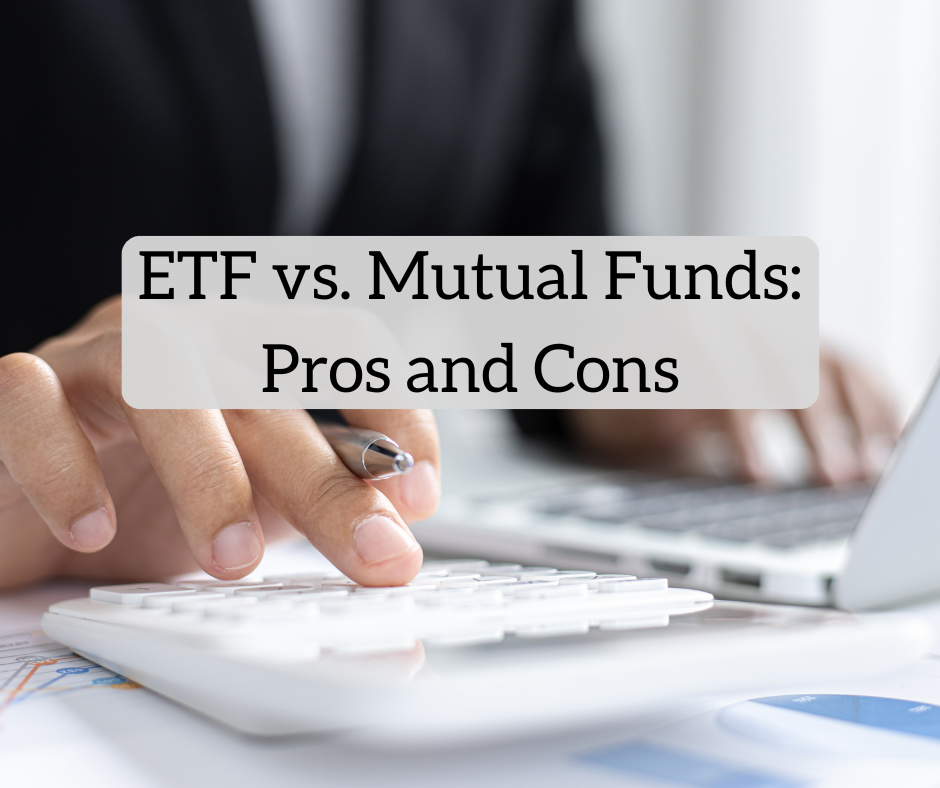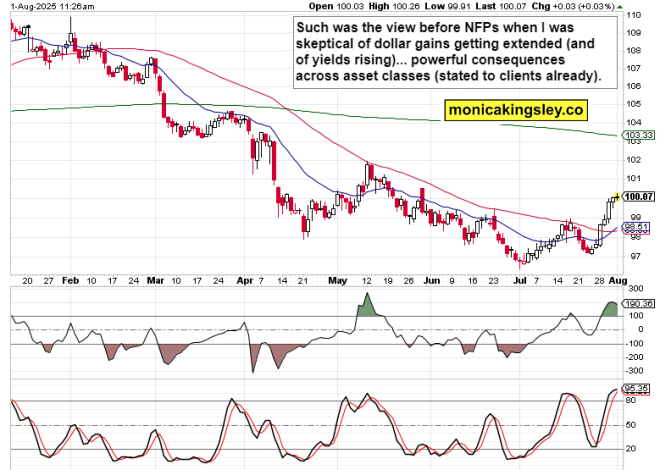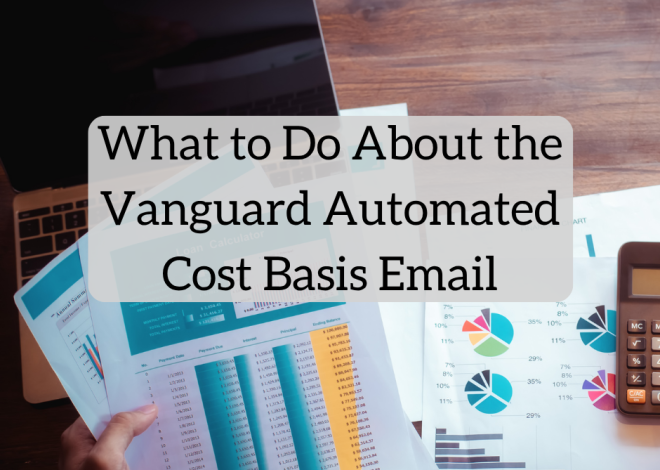
ETF vs Mutual Funds Execs and Cons
 By Dr. Jim Dahle, WCI Founder
By Dr. Jim Dahle, WCI FounderMany starting buyers surprise if they need to be placing their cash in conventional mutual funds (TMF) or exchange-traded funds (ETF). As soon as they study somewhat extra, they uncover it issues way more that they’re investing in the proper of mutual funds (low-cost index funds) and doing it the proper method (shopping for and holding a diversified assortment) quite than whether or not the fund is traded on an trade or not.
Nonetheless, there are some refined variations between the 2 which will allow you to to determine which one to make use of in your circumstances.
Execs and Cons of ETFs
ETF proponents declare higher tax-efficiency, increased transparency, decrease common charges, intraday liquidity, and insulation from compelled shopping for and promoting as strengths of ETFs. Their detractors level out spreads, premiums and reductions, monitoring errors, and difficulties with dividend reinvestment. This, after all, ignores the first argument towards ETFs—that speculators are way more doubtless than long-term buyers to make use of ETFs.
As John Bogle, founding father of Vanguard, has mentioned,
“I freely concede that the ETF is the best advertising innovation of the twenty first century. However is the ETF an excellent innovation that serves buyers? I strongly doubt it. For higher or for worse, ETFs have opened indexing to a brand new market of inventory merchants. The one certain winners are the brokers and sellers of Wall Avenue.”
Immediately, I’m speaking about utilizing ETFs as a long-term investing device, not a speculating device. One can speculate utilizing both kind of fund, even whether it is extra simply finished utilizing ETFs. Every of the arguments for and towards ETFs as an investing device has subtleties price exploring.
ETF Advantages
ETF proponents declare various advantages of an ETF over a TMF, though these advantages are sometimes oversold for the needs of a long-term buy-and-hold investor.
#1 Higher Tax-Effectivity
As a result of distinctive ETF construction, it’s simpler to flush capital positive aspects out of an ETF than a TMF quite than passing them on to the investor. Nonetheless, this does not matter to an investor in a tax-protected account like a 401(okay) or a Roth IRA. This particularly would not matter with the distinctive Vanguard funds, the place the ETFs are a share class of the TMF. In truth, that construction presents the very best of each worlds, the place the positive aspects will be flushed out of the ETF share class, saving taxes for holders of each the ETF and the TMF share courses.
#2 Larger Transparency
TMFs solely should let you know what they personal twice a 12 months. It’s a lot simpler to see what an ETF is holding since its respective parts can be found in actual time. Nonetheless, in case your investments are primarily in index funds (as they need to be), it is fairly apparent what the fund is holding at any given time.
#3 Decrease Common Charges
Whereas ETFs, on common, have decrease expense ratios than TMFs, the averages actually do not matter a lot. What issues is how a lot you’re paying. And the very best ETFs and TMFs have very low bills anyway. For instance, the admiral shares of the Vanguard Complete Inventory Market Index Fund have an expense ratio of 0.04% per 12 months, almost the identical because the ETF shares at 0.03%. Along with the expense ratio, ETF buyers additionally should take care of the prices for spreads, premiums and reductions, and commissions, so even a barely decrease expense ratio could not make up for these.
#4 Insulation from Pressured Shopping for and Promoting
ETF proponents accurately level out that in a time of market turmoil, many buyers panic and pull their cash out of their investments. A TMF is commonly compelled to promote securities at fire-sale costs with a purpose to meet their redemption wants. They could additionally want to hold the next proportion of money to fulfill redemptions, reducing returns in bull markets. This impact will be minimized by investing in funds held primarily by clever, buy-and-hold buyers—like index funds—which are inclined to have decrease turnover throughout bear markets.
Extra data right here:
Selecting Particular person Shares Is a Loser’s Recreation
ETF Downsides
ETFs have their downsides as properly, though most of those will be minimized comparatively simply.
#1 Paying the Unfold
If you purchase or promote something on the open trade, there’s a unfold. For instance, you could possibly purchase shares at $41.09 at any given time however solely have the ability to promote them at $41.01. That eight-cent hole is the unfold. With sometimes traded shares or ETFs, the spreads will be fairly extensive. Nonetheless, you’ll be able to decrease the unfold by buying solely very liquid ETFs.
Once I initially wrote this publish in 2015, the unfold on VTI (the ETF shares of the Vanguard Complete Inventory Market Index Fund) was two cents, from $106.78 to $106.80. That represented about 0.02% of your buy. It was nearly insignificant (though it was about 40% as massive because the expense ratio for the whole 12 months). A much less often traded ETF, similar to PDH (PowerShares DWA HealthCare Momentum ETF), had an expansion of 27 cents from $54.76 to $55.03—or about 0.5% of your buy, 25 occasions as a lot as VTI.
#2 Premiums and Reductions
Generally ETFs should not bought for a similar worth as the entire of the underlying securities within the ETF (Web Asset Worth or NAV). Whereas ETFs have a mechanism to right this drawback, this mechanism can break down in occasions of extreme market volatility. A TMF by no means has this challenge, as its worth equals the NAV on the finish of day-after-day. This challenge will be minimized just by avoiding buying and selling in periods of excessive market volatility or when the premium or low cost shouldn’t be in your favor.
#3 Monitoring Error
This is a matter with any index fund, whether or not exchange-traded or not. The much less liquid the asset class and the dearer the fund, the upper the distinction between the fund’s efficiency and the index efficiency might be.
#4 Dividend Reinvestment
One of the handy features of a TMF is that you could simply have the dividends reinvested routinely. This is probably not a good suggestion in a taxable account—it creates a whole lot of small tax heaps to maintain monitor of—however it is extremely helpful in a tax-protected retirement account.
Sadly, this function is commonly not out there for ETFs (some brokerages provide this function, however typically just for their very own ETFs). Dividends have to be reinvested manually. This introduces further trouble and prices (primarily spreads and buying and selling commissions).
Extra data right here:
A Die-Arduous White Coat Investor Buys an Particular person Inventory – An M&M Convention
Selecting Between ETFs and TMFs Comes Right down to Value and Trouble
Most good buyers select between ETFs and TMFs based mostly on sensible points—value and trouble. Let me present you what I imply. In my 401(okay) on the time I initially wrote this, I might make investments my cash right into a handful of low-cost Vanguard index funds and pay a 401(okay) payment of 0.3% per 12 months to the 401(okay) firm. Alternatively, I might make investments my cash in something out there via the Schwab brokerage for $200 per 12 months, plus $8.99 per commerce. At a sure stage of property ($70,000-$100,000), the 0.3% payment is increased than the flat charges. So, when my 401(okay) hit that dimension, I switched. I selected to put money into the ETF model of the identical or comparable Vanguard index funds out there within the 401(okay) already however at a lower cost.
On this scenario, the supposed benefits of ETFs did not matter in any respect.
- I do not want tax effectivity, as the cash in a 401(okay) grows in a tax-protected method.
- Transparency would not matter to me, as each the normal index funds and their respective ETFs maintain the very same securities and everybody is aware of what they’re—all the securities.
- The charges on the investments themselves are precisely the identical. I actually do not want intraday liquidity, as I do not want this cash for a few years.
- In truth, if the prices to me have been the identical, I would favor the normal mutual fund, as I would not should undergo the trouble of inserting purchase orders or having to reinvest dividends manually. However I am not keen to pay tons of and even hundreds extra in 401(okay) charges to take action.
There are additionally occasions when the funding you need is just out there as an ETF or solely as a TMF. In these circumstances, the investor must use what is on the market or select a distinct fund or asset class.
The underside line is that you should use both conventional mutual funds or ETFs to put money into an affordable, low-cost method. It is best to select based mostly totally on value and the quantity of trouble.
The place do you come down within the ETF vs. conventional mutual fund debate? Do you utilize ETFs, mutual funds, or each? Why?
[This updated post was originally published in 2015 at MD Magazine.]





